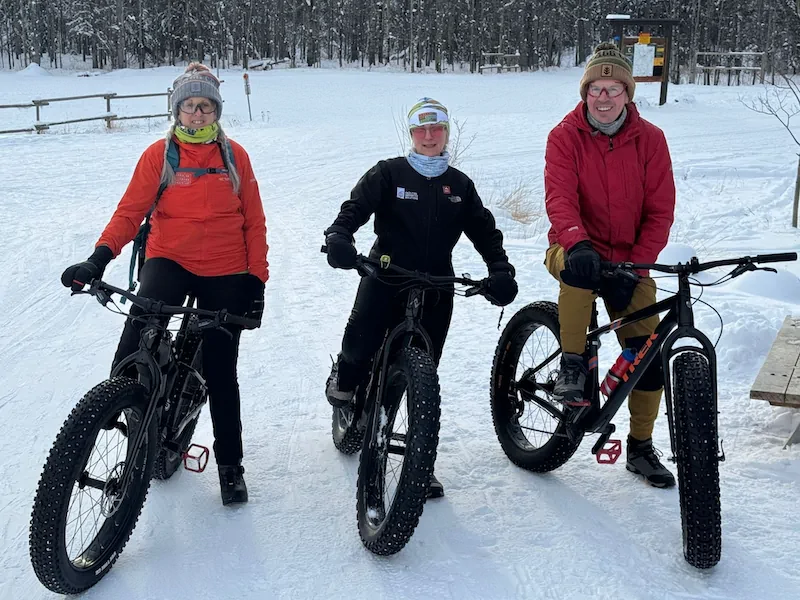With the advent of fat bikes, mountain biking season no longer ends when the snow starts flying. The sport has grown rapidly over the past few years and it’s easy to see why. Their wider, oversized tires provide increased traction in the snow and if you opt for studded tires (highly recommended), you’ll be able to ride over ice and hard-packed snow without fear of slipping and sliding. If you’re looking at trying fat biking this winter, here are my top tips for getting outside and having fun on two wheels.
Getting a Bike:
Thankfully, the pandemic’s bike boom is over so finding a bike at a local shop is pretty easy these days. There are, however, several shops that will rent fat bikes so you can try before you buy. Remember to ‘ride the wide’ in the winter, meaning tires width should be greater than 3.7 inches.
Dressing for the Weather:
Since this is a winter activity, dressing for the conditions is important. Cold fingers and toes are common complaints, so wearing warm socks and waterproof footwear is ideal. You’ll want to wear gloves instead of mitts, so you have enough dexterity to grip the handlebars, use the breaks, and shift gears easily. Pogies are really helpful for keeping your hands warm. For the rest of your body, dress like you’re going cross-country skiing; warm layers with a wind/waterproof outer shell. If you’ve got a bike helmet, find a toque that’ll fit comfortably underneath it. Otherwise, you can wear your ski helmet, which will be warmer than your bike helmet. You can even opt for your ski goggles instead of sunglasses. If your pants are even slightly baggy there is a risk of getting them caught in the chain. Tucking them into your socks can help but I prefer to wear gaiters. Previously, I wrote a story about dressing for colder weather, which you might find useful.
What to Bring:
In addition to your bike and winter clothing, you’ll also want to have some extra items in your pack. Enough water to sustain you for the day, as well as lunch and/or snacks. A thermos with a warm drink or soup really hits the spot on those cold days. Chemical hand/toe warmers are worth their weight in gold if you’re susceptible to cold fingers and toes. It’s always a good idea to bring along the 10 essentials for any outdoor adventure as well. In terms of bike-specific items, I always ride with a patch kit, a mini-pump, a spare tube, tire levers, a chain-break tool, and some quicklinks. These items can turn a flat tire or broken chain from a day-ruining headache into a relatively minor inconvenience.
Where To Ride
Bragg Creek Trails has you covered when it comes to finding the best trails to ride. By following this link you’ll get access to all of the trails that are specifically groomed for fat biking.
Am I Doing This Right?
It’s important to know the etiquette of the sport before venturing out. Remember, cyclists yield to ALL other users. Avoid riding if your tires are leaving large ruts on the trails. When using multi-use trails, do not ride over cross-country ski tracks and avoid mixing dirt into the snow. Follow signage and stick to the trails that allow fat bikes. Be an ambassador of the sport; be polite, educate other riders, and discourage inappropriate behaviour. For more on winter trail etiquette, please refer to this previous story.





